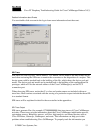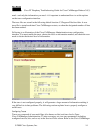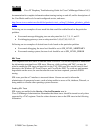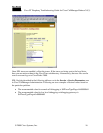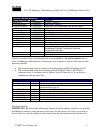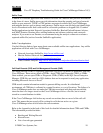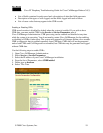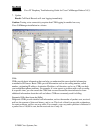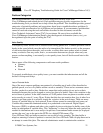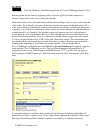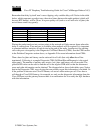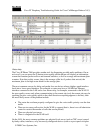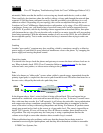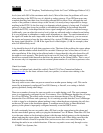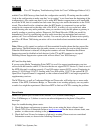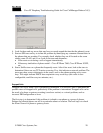
Cisco IP Telephony Troubleshooting Guide for Cisco CallManager Release 3.0(1)
© 2000 Cisco Systems, Inc. 21
Problem Categories
This section addresses some common problem categories that may occur with
Cisco CallManager and related devices. Each problem category provides suggestions for the
troubleshooting tools you should use to help isolate the problem. This document provides general
categories of potential problems and suggestions about how to troubleshoot those problems. It
does not provide an exhaustive list of problems and resolutions. If you encounter a problem that
cannot be resolved using the tools and utilities described in this document, consult the
Cisco Technical Assistance Center (TAC) for assistance. Be sure to have available the
Cisco CallManager Administration Details, plus the diagnostic information (traces, etc.) you
have gathered up to the point of calling the TAC.
Voice Quality
Voice quality issues include lost or distorted audio during phone calls. Common problems can be
breaks in the sound which cause the audio to be intermittent (like broken words), or the presence
of odd noises that distort the audio, such as echo, or effects that cause spoken words to sound
watery or robotic. One-way audio, that is, a conversation between two people where only one
person can hear anything, is not actually a voice quality issue, but will be discussed later in this
section.
One or more of the following components could cause audio problems:
• Gateway
• Phone
• Network
To properly troubleshoot voice quality issues, you must consider the infrastructure and all the
devices for drops and delays.
Lost or Distorted Audio
One of the most common problems encountered is a breaking up of audio (often described as
garbled speech, or a loss of syllables within a word or sentence). There are two common causes
for this: packet loss and/or jitter. Packet loss means that audio packets do not arrive at their
destination because they were dropped or arrived too late to be useful. Jitter is the variation in the
arrival times of packets. In the ideal situation, all VoIP packets from one phone to another would
arrive exactly at a rate of 1 every 20 ms. Notice that this does not mention how long it takes for a
packet to get from point A to point B, simply the variation in the arrival times. There are many
sources of variable delay in a real network. Some of these cannot be controlled, and some can.
Variable delay cannot be eliminated entirely in a packetized voice network. Digital Signal
Processors (DSPs) on phones and other voice-capable devices are designed to buffer some of the
audio, in anticipation of variable delay. This “dejittering” is done only when the audio packet has
reached its destination and is now ready to be put into a conventional audio stream (to be played
out into the user’s ear to be sent to the PSTN via a digital PCM stream). The
Cisco IP Phone 7960 can buffer as much as one second of voice samples. The jitter buffer is
adaptive, meaning if a burst of packets is received, the Cisco IP Phone 7960 can play them out in
an attempt to control the jitter. The network administrator needs to minimize the variation



